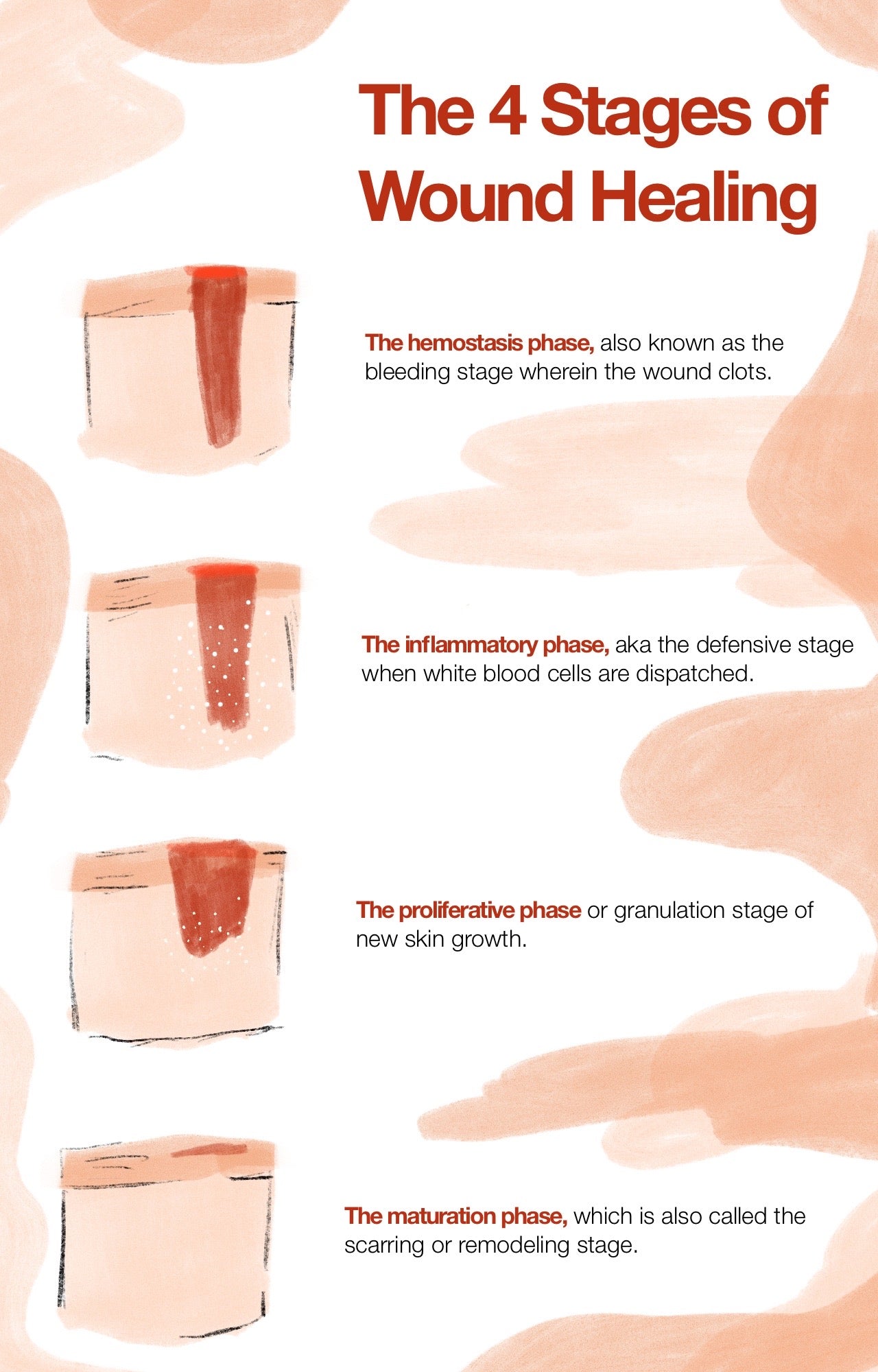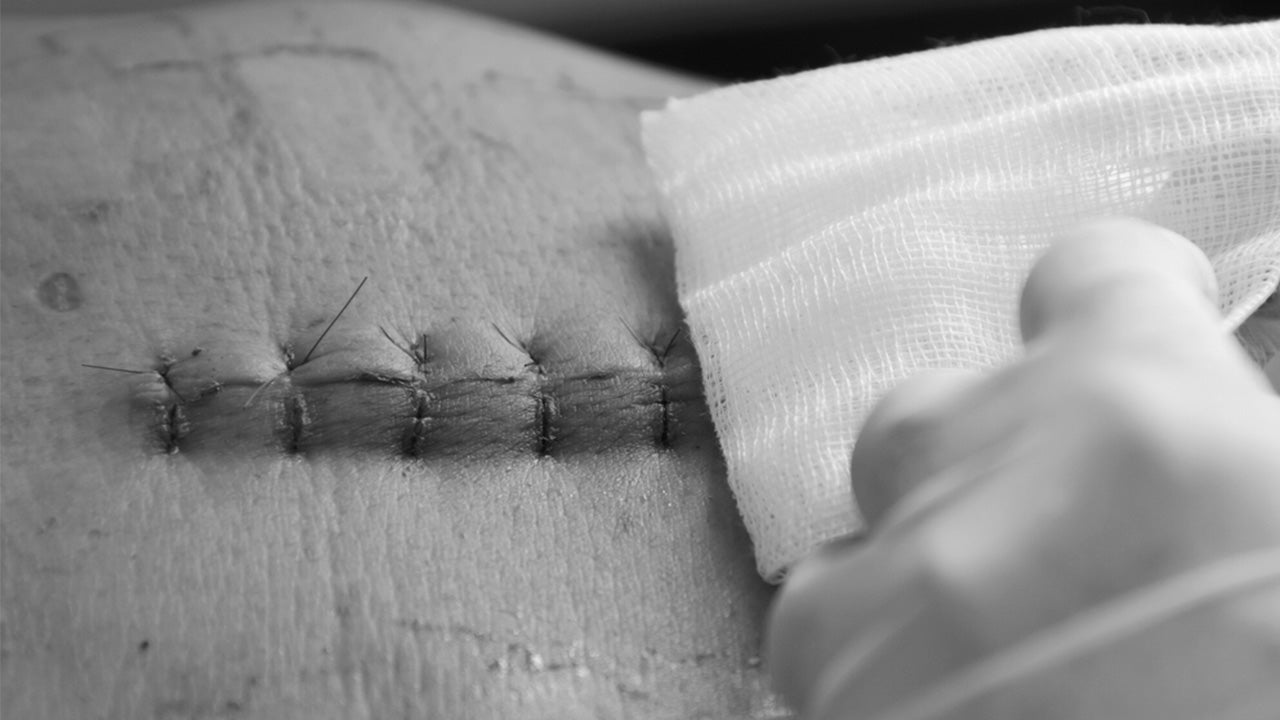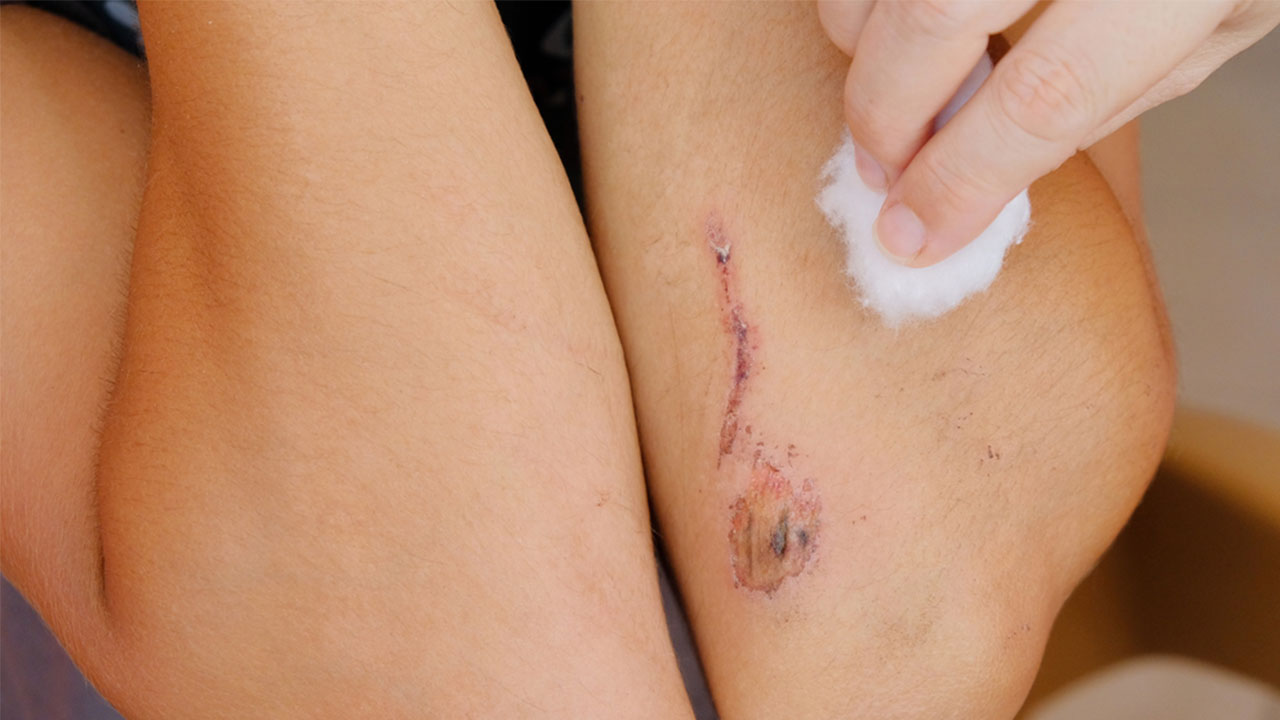Why Do Wounds Itch? The Healing Process and How to Accelerate It Naturally
 By: by Amino Science
By: by Amino Science

Wound care, cleaning, and support are essential to the healing process, whether you're recovering from a scraped knee or major surgery. When we get our first scabs as children, many people wonder, "Why do wounds itch?" This article has the answer to this question, plus tips for reducing that maddening itch, and one key scientifically backed aid that helps your wounds heal faster.
The Wound-Healing Process
Here's a quick run-down of the four stages of wound healing.
- The hemostasis phase: This phase is also known as the bleeding stage. At the point of injury the body immediately responds with lymphatic fluid to cause coagulation (blood clotting) and stop the blood loss as quickly as possible.
- The inflammatory phase: This is also called the defensive stage and can last up to a week, even for minor injuries. To defend against possible wound infection, the body sends white blood cells to the area, which may cause symptoms of swelling and inflammation that you can reduce naturally if it's uncomfortable or painful.
- The proliferative phase: This is the tissue and blood vessel regrowth period sometimes referred to as the granulation stage. It can last up to a month and may come with visual signs of healing like scabs that protect the new skin cells that grow beneath.
- The maturation phase: Also known as the scarring stage or the remodeling stage, this phase of healing could last for years depending on wound severity. For a simple scrape, however, this is the part of the healing process when the scab falls off and the new tissue created begins to build flexibility and strength, and new collagen fibers are formed from scar tissue.
The itching you feel during healing predominately takes place during the third stage (the proliferative phase).

Why Do Wounds Itch?
"Itching" is medically referred to as pruritus. It is commonly said that when a wound is itching, it's healing, and guess what? It's true. Wound itch is a sign of healing, and here's why.
The nerve fibers beneath your skin are highly sensitive. If you feel the movement of an insect, a hair, or a feather across your skin, your body may recognize it as an irritant to be slapped away and dealt with. Healing wounds trigger that same reaction because the healing process involves tissue growth, skin tightening, and sometimes irritation in the affected area. When your nerves communicate this information via your spinal cord, the brain interprets it as an itch.
Another factor that may be causing an itching sensation at your injury site is the chemical histamine, which the body releases to help boost skin cell regrowth. Histamine can cause the symptoms of an allergic reaction (including itching), which is why those who experience allergies often take antihistamines to reduce their symptoms.
We're not done yet: another possible culprit behind your maddening itch could be dry skin. When scabs first form they are moist and relatively supple, but as the healing process goes on, scabs tend to dry out. Scabs that become scaly and stiff may tug uncomfortably at the dry skin surrounding the area. This stimulates an itchy feeling that makes many want to scratch and pick at their scabs, which any health care provider would advise you not to do. Scratching at a healing wound could cause it to reopen, and tearing off a scab increases your risk of infection and exposure to dirt, harsh sunlight, and other environmental irritants.
If itchy skin or scabs are driving you mad, read on to discover some safe, natural ways to ease the itch without scratching.

How to Safely Relieve Wound Itchiness
If you're interested in specific advice or a personal recommendation for soothing antiseptic products, ask a trusted health care professional. For general advice on how to ease wound itch without harming or further irritating the area, here are some tips.
1. Clean and Protect
The first bit of medical advice anyone could give you regarding a new wound is to clean it. With warm water and mild soap, be sure to cleanse the area and remove any dirt or debris that may be stuck to the wound. Once the area is clean, you may want to apply a bandage for the first day or so to keep any foreign particles or germs from finding their way back in.
Consider using an antibacterial aid like Neosporin under the bandaid to help neutralize any bacteria. If you experience itching under your bandage, a cold compress applied for 20 minutes or less can help reduce that sensation and minimize painful inflammation.
Once your body begins to heal and a scab starts to form, you can let the wound breathe again: scabs are your body's natural bandaid.
2. Moisturize
We don't mean slather an open wound with scented lotion, but by keeping the skin surrounding the base of the wound properly moisturized with mild lotion, you can reduce itchiness and allow your skin to move more freely around a forming scab. This reduces instances of hardened scabs cracking in half and reexposing the raw area to the elements.
3. Dress for Success
Around whatever wound dressing you may have for the area itself, wear loose-fitting, soft clothing. Tight, stiff, or abrasive material like denim could irritate and reinjure the area, which may lead to chronic wound issues by slowing down the healing process and needlessly taxing the immune system.
By wearing breathable clothing, you reduce the risk of sweat buildup around the injury as well, which helps keep the wound clean and happy.
4. Anti-Itch Creams, Medications, and Natural Remedies
Over-the-counter medications that contain cortisone can be used to help reduce itchiness, as can anti-itch creams like calamine lotion, or better yet, healing ointments. All-natural itch relief can also be found in aloe vera plants and mint, which contains the gentle yet mildly numbing compound menthol.
5. Behavior Modification
For unopened but itchy wounds like mosquito bites, one way to avoid scratching the area repeatedly is to simply use your fingernail to press an X shape over the bite. That relieves the itching sensation without breaking the skin and further inflaming the area. For opened or scabbed wounds, applying pressure to the skin around the wound can help you relieve the urge to scratch too, as it satisfies the perception issues of your nerves.

How to Speed Wound Healing
The only action that truly heals a wound is new tissue generation and growth. That new tissue creation cannot happen without all nine of the essential amino acids, called "essential" because we get can only get them from protein foods or supplementation and cannot generate them ourselves. An imbalance of these nutrients in the body could delay your healing, or more destructively, cause the breakdown of nearby healthy cells in order to harvest the needed material to repair an open wound. When the body is hurt, it prioritizes its resources and takes what it needs without asking.
Our last recommendation for any form of wound healing (from scabs to surgery recovery) is to take a balanced amino acid supplement like the one developed by our own Dr. Robert Wolfe (click here to get to know Heal). That way your body has what it needs to heal your wound as quickly, safely, and naturally as possible.
An Itch You Can't Scratch
It's important to control your impulse to scratch at a newly healing injury, as further irritation could cause chronic damage or a dangerous infection. There are many ways you can minimize the itching sensation and boost your recovery time during the wound-healing process: take care of the affected area, soothe it safely, and clear the path to recovery so that your body can heal itself in record time.

Up to 25% off Amino
Shop NowTAGS: injury
Join the Community
Comments (0)
Most Craveable Recipes




 833-264-6620
833-264-6620



















